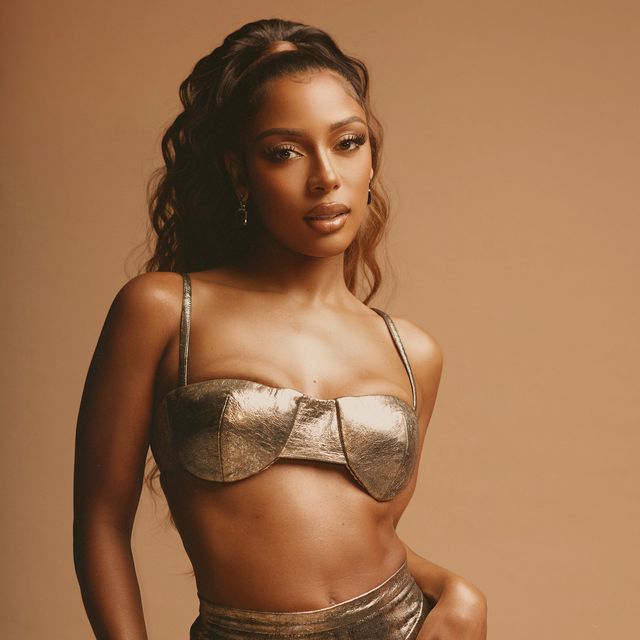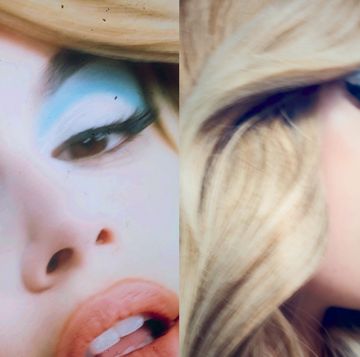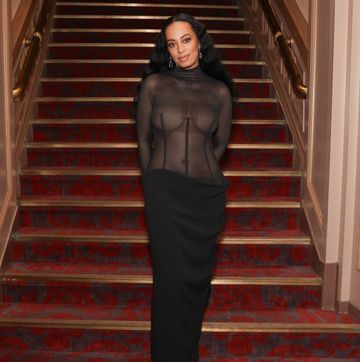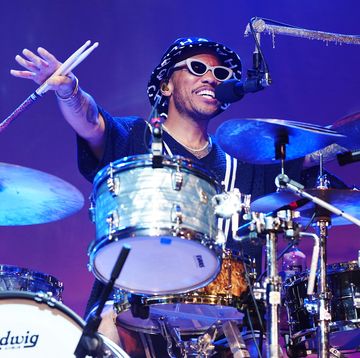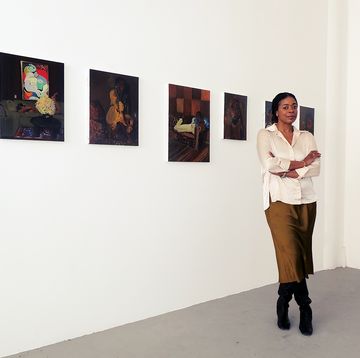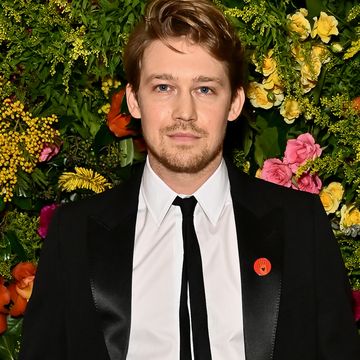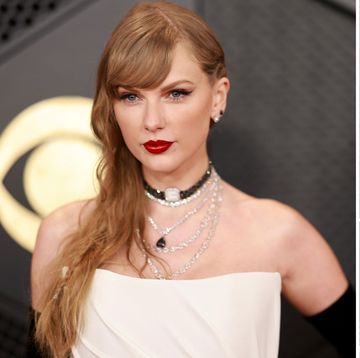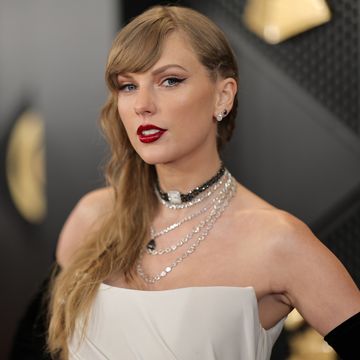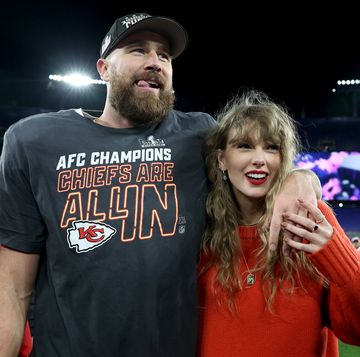Victoria Monét is well versed in the ritual of hard work. Before becoming known as a hitmaker and performer, she spent endless hours behind the scenes, sharpening her knife and refining her pen to make her songs, videos, and live shows as inspired, creative, and lush as they are today. She loves to rehearse: As a child, she would practice endlessly in her room, making sure a drawing was of proper quality before presenting it to her mother. That ravenous hunger for precision is why she identifies so strongly with the jaguar motif. In February 2020, she launched the first installment of a musical trilogy bearing that name to critical acclaim; Jaguar II comes out August 25. “I still feel like I’m on the prowl and inching towards something,” Monét admits. Despite the rapturous response to the first Jaguar’s decadent melodies and visuals, the pandemic prevented her from touring with her new music—and as she prepares her rollout for the sequel, she is more than ready to make up for lost time. “I’m excited to finally do that,” she says. “2020 kind of robbed us musicians, specifically—really, just entertainers too—from touching our people and seeing the people who support us and hugging them and, you know, saying thank you in person.”
Monét’s performances are a testament to her fidelity to labor. After years of serving as opening act on grueling arena-tour schedules where she would often be doing her own hair and makeup, working overtime to convince a crowd to come along on her journey, the celebrated singer-songwriter headlined her first sold-out show in March, an iridescent vision alongside her backup dancers, band, and leafy set production. And the demand is not waning any time soon: After the dates were announced for her first international tour as a headlining act, tickets for all locations sold out in mere minutes, even after she added additional shows in a few cities, with her robust social-media fan base eager to see her take center stage after years of watching a performer of her pedigree take preshow slots for award ceremonies or early call times in festivals.
The hype is well merited: Onstage, Monét’s presence is enchanting, the endless hours of rehearsal resulting in a sublime execution of choreography and song, featuring moments that range from appearing deceptively effortless to a controlled frenzy, a clear child of the lineage of Beyoncé Knowles-Carter and the recently departed Queen of Rock ’n’ Roll, Tina Turner. Much like her musical style, her set arrangements thoughtfully blend classic, high-energy showgirl movements with contemporary trends. In one breath, Monét is moving in lockstep with her backup dancers, invoking the powerhouse sensuality of the Ikettes (who, alongside Tina, were originally patterned after Sheena, Queen of the Jungle comics—a rather fitting homage for a jaguar); the next, she’s integrating a dance break to Trillville’s “Some Cut” that has been received so well, it has evolved into a TikTok trend. Her vibrant horn section—a signature element of her rich and layered sound—envelops her as if she were an angel inviting her audience to the gates of heaven.
After a decade of hitmaking for others, Monét is stepping into the light and reaping her own rewards. For those who have followed her career since the beginning, it feels as if it's about damn time.
Monét and I are speaking the day before the debut of her single “Party Girls”—a throbbing, reggae-infused track on which her use of huskier vocals paired with flute notes evokes hints of Sade’s “Love Is Stronger Than Pride.” She blushes at the comparison to one of her idols, whose music is a mainstay when she’s on vacation or in relaxation mode. “Obviously she’s incomparable,” Monét stresses, adding that “to have any similarity with [Sade]—it’s just an honor, but it was not intentional.” The new single also features the unmistakable, gravelly timbre of the inimitable Buju Banton. “I was introduced to Buju through my mom,” Monét says via Zoom. She is speaking to me from the comfort of her California home, the sunlight radiating throughout the brightly lit living area and illuminating her already seemingly permanent sun-kissed glow. “She was listening to his music, and I just remember his voice really standing out to me—he has this rasp and this excitement to his voice.”
Her mother kept Banton on rotation, and Monét never forgot his name; she followed him on social media around 2017. By the time “Party Girls” came around, the Jamaican legend was following her back, much to her surprise—and she took it as a sign to try her hand at a cold pitch.
“I DMed saying how much I respect him and love his music and I love to collab, and he was down,” Monét recalls, her trademark dulcet tenor betraying her excitement. Banton gave her his WhatsApp soon after, and they began communicating, discussing the song and exchanging verses. “He video-called me on WhatsApp when I was in rehearsal, and I freaked out—I was like, Oh my God, I’m all sweaty,” she says. The verse Banton shared blew her away. (Their creative exchange would continue to bear fruit: Monét is making her own guest appearance on Banton’s upcoming album, Born for Greatness, on the track “Body Touching Body.”) Not long after, she would go through dance rehearsals with Sean Bankhead to set choreography and head to Jamaica to shoot the video for “Party Girls”—a sultry, bewitching romp of a track.
While the first Jaguar, a 25-minute EP, was released as an independent labor of love, the full-length Jaguar II is being released with major-label support—a serendipitous shift for Monét, after years of having to use as much of her own bandwidth as possible to get her artistic vision out to the public. Although, she notes: “The work is actually the same if not even more, because there’s a team of people who have more suggestions and more things that they know would work.” But, she says, “I’ve got so much help and so many people in my corner with so many great ideas and so much effort put behind me—even the things that I don’t even know are happening, I know that they’re helping and doing, so I’m just thankful.” It isn’t her first go-round with the majors. Having previously been signed to Motown and Atlantic, Monét had her hesitancies coming back to the big table. “It took me a while to get to this place,” she admits, noting that timing and setting were key factors to cementing this deal. “I’m going to work regardless, because this is just, like, independently [what] I’ve done, and then [RCA has] such a great track record with so many people that they’ve done great things with before that it’s just, like, a complete trust—so I’m excited.”
Creative vision, however, is not something she’ll cede lightly. After years of working with the same collaborators—including a 13-year relationship with Grammy- and Oscar-winning producer D’Mile, one of the core composers behind the 2021 juggernaut An Evening With Silk Sonic—Monét holds fast to the ethos that rumbles through the video for her title track, amid a sensuous, digitally rendered wilderness fantasy: There are many voices in the jungle, but the clearest one will always be your own. While she may have become a highly regarded name thanks to her songwriting—crafting pop hits for everyone from childhood idol Brandy and Chloe x Halle to longtime friend and musical partner, pop supernova Ariana Grande—the Jaguar universe is purely hers, a slickly constructed soul-and-funk-led R&B sound, dripping with thumping bass guitars and delicately stacked vocals. This includes her music videos—by the time she has finished working with a song, it has lived within her so long, she has already begun to form a visual narrative and storyboard. “We’re very specific with what directors we want to use, what style we’re going for—lot of references, mood boards, color palettes.” Monét sits in on the edits, reviewing her shots to the frame—and it shows in videos like “Moment,” a mesmerizing siren song with breathtaking transition shots. “The Taurus in me is very, like, But, no, I already see it how I see it,” she says, laughing. “I just have to be open once I invite directors to collaborate or, you know, reach out to other people, just being open to how they see it as well.”
Given Monét’s meticulous nature, nerves came along with the prospect of introducing Jaguar’s sequel to the world, her team poring and nitpicking through the album until no stone was left unturned. “There was a point where my team thought the project was done,” she said. “And I was just like, ‘I don’t know some things; I don’t think it’s done.’” Some of the music from Jaguar had been made in the process of releasing its predecessor, giving her a strong foundation, but revisiting her earlier work made her want to outdo herself. Much had also changed since that time: Monét had gotten serious with fitness model John Gaines, and in February 2021 gave birth to their daughter, Hazel.
“On My Mama” was the first song she wrote postpartum that she liked. “I was really having a hard time after having Hazel, because sometimes I'm really inspired by my environment and what’s happening in my life, and all I was really doing was, like, feeling down and breastfeeding,” she says. Instead of workshopping lyrics about nipple covers, she switched her focus to her maternal legacy—her mother’s musical sensibilities, her grandmother’s influence, and the arrival of her own daughter—crafting a song that exuded confidence and femme positivity, with a sound that melded her marquee horns and a jazzy bass line with an invigorating sample of Chalie Boy’s 2009 classic “I Look Good.” For Monét, it was a gift to be able to repurpose her experiences in a more affirming manner. “For [my team] to trust me, let me explore more, even though it kind of took a little bit more time, I really appreciate it,” she says. The trust has paid off. Monét had the internet and her celebrity peers enamored with the release of the “On My Mama” video, in which she pays homage to the South, Queen Bey and Ciara, and even iconic Black Twitter memes.
Immediately following “On My Mama” on Jaguar II is the beachy R&B record “I’m the One,” whose picturesque lyrics match its showstopping production. “I could be riding horseback towards you / Slow motion on the beach / Titties bouncin’ and everything,” she breathily croons to open the verse—a sequence so dense and potent that 16 words do the work of a thousand, instantly painting a picture of an ethereal Monét in the saddle, backlit by the setting sun. “When I’m describing things or when lyrics come, they’re not planned. Like, I almost feel like they’re gifts,” she says, describing her process. “Ideas are really just floating in the air, and you have to grab it—you have to grasp them and, like, use them.” The slo-mo fantasy image is intended to illustrate how sometimes people miss what’s right in front of them; while it is meant to be romantic, it can also serve as a metaphor for her career, a woman who has spent years crafting exactly what R&B fans have clamored for from newer acts. “I like that [the track] plays back-to-back with ‘On My Mama,’” she observes. “It’s such a confident thing—a self-affirmation that you’re like, I know I’m the one, and the next song is like, Well, why don’t you see that?”
Besides using her prose to etch detailed images into your mind’s eye, Monét animates her storytelling with breathtaking visuals. Jaguar II lead single “Smoke,” featuring Lucky Daye, is an unsubtle ode to her affinity for cannabis, as well as a metaphor for “exhaling the old and inhaling the new,” as she has put it in earlier statements. The video clocks in at a cheeky 4:20 runtime. The storyboard is vibrant and precise, reminiscent of Beyoncé’s aesthetic choices in the criminally underrated “Why Don’t You Love Me”: cascading chocolate hues, a hazy desert, Daye barbecuing as fumes radiate off the grill, Monét whipping her taut body around a pole enshrouded in a fog of bong vapors, her petite frame hamming it up as a pre-roll box. The “Party Girls” video emphasizes Monét’s skills as a dancer and performer, with her taking on the role of enchantress at a late-night club, rendering men, women, and everyone in between helpless to her rhythmic charms. Her body undulates effortlessly: She wines, gyrates, dances bachata, ticks her waist, twerks. Banton waxes rhapsodically of the women who “burn down the whole club and set the roof on fire”—later in the scene, Monét licks the flame she ignited as it highlights her beatific visage. Perhaps unintentionally, the short story serves as a conceptual counterpart to Beyoncé’s 2003 chart-topping “Baby Boy”—young women navigating passion and lust between the thumping four-counts of the sound system at a Jamaican bashment, with the gender roles around the focal object of desire slightly inverted.
Listening to Jaguar II, I find myself awed by the threads Monét is able to pull together into a new body of work. There’s a fleshiness that marks her sound as it matures, with a veneration for live musicians—strings, horns, percussion, flutes—that creates a robust, heady listening experience. Her vocals and vocal production have been sharpened by Rodney “Darkchild” Jerkins, the Grammy-winning superproducer behind canonical R&B hits such as Destiny Child’s “Say My Name,” Brandy’s “What About Us?” and Toni Braxton’s “He Wasn’t Man Enough,” who brought her into the industry with a serendipitous MySpace message, as well as the mentorship of the late LaShawn Daniels, Jerkins’s frequent songwriting collaborator, who guided her through constructing harmonies and lyrics as she got some of her first writing opportunities in the studio. Her voice elevates ballads like “How Does It Make You Feel” and “Hollywood,” the latter of which features Earth, Wind & Fire—a dream come true for Monét, who calls the legendary band one of her greatest influences.
“I base a lot of the reasons why I did Jaguar 1 on Earth, Wind & Fire and their sound, and listening to their music all over again reinspired me to do the Jaguar series,” she gushes. Monét even briefly cosplays as founding bassist Verdine White in a quick cutaway in the video for “Smoke,” a testament to her lifelong adoration. “It just really kind of makes them cool because, as legends themselves, they do not have to do anything else,” she says. “It just means so much that they’re willing to collaborate with me, you know? Like, they owe me—they owe the world—nothing.” Continuing the tradition of musical exposure started by her mother, Monét made sure to bring Hazel along to experience Earth, Wind & Fire—the closing notes of the song are none other than the baby’s heart-melting coos.
Like any artist, Monét is sensitive to other people’s expectations of her work. But her commitment to the creative process and resisting the urge to rush to market keeps her steady. “I’m good, because I know that I challenged and I went back and nitpicked and, like, you know, the fans will know it took time,” she says with conviction. “Because I’m proud of it. I feel confident in seeing whatever the world feels about it.” There is no critic who can hold her to a higher standard than her own, as she constantly pushes her limits. Every output is meant to elevate and outdo the last, building from the same bloodline. As she starts to conceptualize her tour, Monét acknowledges the challenge before her—she plans on bringing her daughter along, unwilling to miss chunks of Hazel’s life while on the road. She is also hoping to schedule meet-and-greets, to give her fans memories beyond the stage lights. “I’m going to be in rehearsals for a really long time,” she says, laughing, thinking about the inevitable expenses that will be incurred. “I’m excited to do that. I’m ready for the work.”

Shamira Ibrahim is a Brooklyn-based culture writer. Her work has been featured in The Atlantic, The New York Times, The Washington Post, Teen Vogue, BuzzFeed, Vox, The Intelligencer, OkayAfrica, and The Root.
